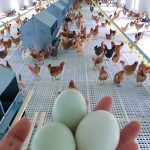Chicken feed machine price
| Model Type | Price Range | Corresponding Models & Descriptions |
|---|---|---|
| Mini Small-Sized Models | $230 – $690 | Cover simple manual and small electric versions. Suitable for small-scale home chicken farming. Minimum order quantity is 1 unit. Some models can process feed for various poultry. |
| Small & Medium Farm Models | $800 – $5,555 | Include multiple power options such as diesel-driven and tractor-driven. For example, some flat die models are priced between $800 – $2,950 with a production capacity of 250 – 400kg/h, ideal for small and medium-sized farms. |
| Commercial / Industrial-Grade Models | $3,000 – $15,600 | Commercial options include poultry feed making machines quoted at $3,000. Industrial ring die chicken feed pellet machines have a unified price of $15,600. These models feature high output, suitable for large feed factories or large-scale breeding bases. |
| Large Customized Models | $12,700 – $22,000+ | For instance, some high-output ring die models are priced at $12,700 – $25,000. There is also a portable model for pets and poultry quoted at $22,000. Suitable for large breeding enterprises or feed processing production lines. |
Most of these articles just split prices into small, medium, and large models—none of them spell out the real truth: price is basically how well your farming scale lines up with your profits. If you’re a small-time farmer buying a 20,000-dollar industrial machine, you’re not overspending—you’re using the wrong farming logic. And if a medium-sized farm goes for a cheap 200-dollar standalone machine to save money, you’re just setting yourself up for trouble down the line.
Price isn’t some random number. It’s like a mirror of your farming setup—it shows how many chickens you plan to raise, how much profit you want to make, and how much time you can put in. Talking about price without considering your actual farming situation is like ordering takeout without knowing how hungry you are: either you’ll still be starving, or you’ll waste money on food you don’t need.
Discussion based on price range of chicken feed machine
200+ Dollar Range: A Transitional Pick for Part-Time Farmers
Equipment in this price bracket is meant for farming as a side gig, not a full-time operation. Most buyers here are small-scale farmers—people who raise fewer than 500 local chickens at home. They mix their own feed and make their own pellets, not caring about high output. All they want is to cut down on feed costs and keep their chickens’ quality top-notch.
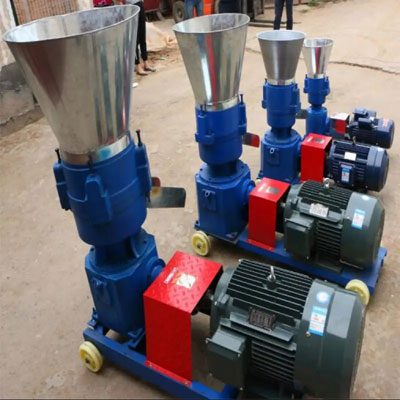
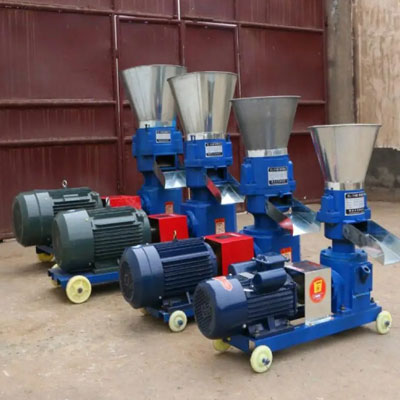
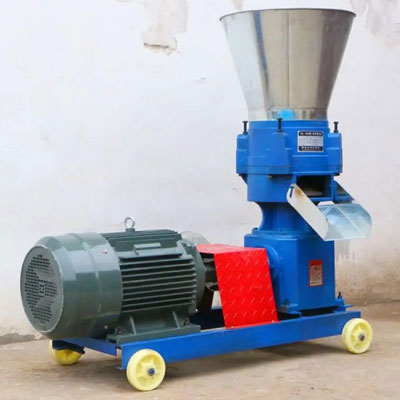
(Image: Typical 200-dollar range model—only 80cm tall and around 20kg, it fits right in a courtyard corner, perfect for small-scale processing needs.)
How does it work? Most of these machines use a flat-die extrusion design. A motor spins the flat die, and pressure rollers squeeze mixed feed (corn, soybean meal, wheat bran, etc.) through tiny holes in the die. The feed gets shaped by the die and cut into even pellets by a blade. It’s simple and cheap, but there are limits: the motor is usually no more than 2.2KW, and the die holes are mostly 3-5mm. So you’ll only get 30-80kg of pellets per hour, and you have to keep feeding it manually—great for small batches.
I heard a real story from a farmer: she bought a 200-dollar electric pellet mill just to make additive-free feed for her 200 local chickens. To her surprise, the pellets shortened the chickens’ time to market by 10 days and made their meat tighter and more tender. Local restaurants even offered to buy them at a higher price. For her, that 200 dollar wasn’t just equipment cost—it was a deposit to label her chickens as “ecological,” and she ended up doubling her money with the premium.
But don’t ignore the hidden costs. With only tens of kilograms per hour, you’ll spend time feeding and cleaning it—this works only if you can spare 1-2 hours a day. If you’re aiming for large-scale farming, the low output will drag down your efficiency. For example, raising 200 chickens would mean spending over 4 hours a day just making feed—you’d be better off buying commercial feed instead.
2000+ Dollar Range: The Best Value for Professional Farmers
This is the sweet spot for medium-sized farms, ideal for those raising 200-5,000 chickens. People who buy these treat farming as their main job—their top priorities are steady output and less manual labor.
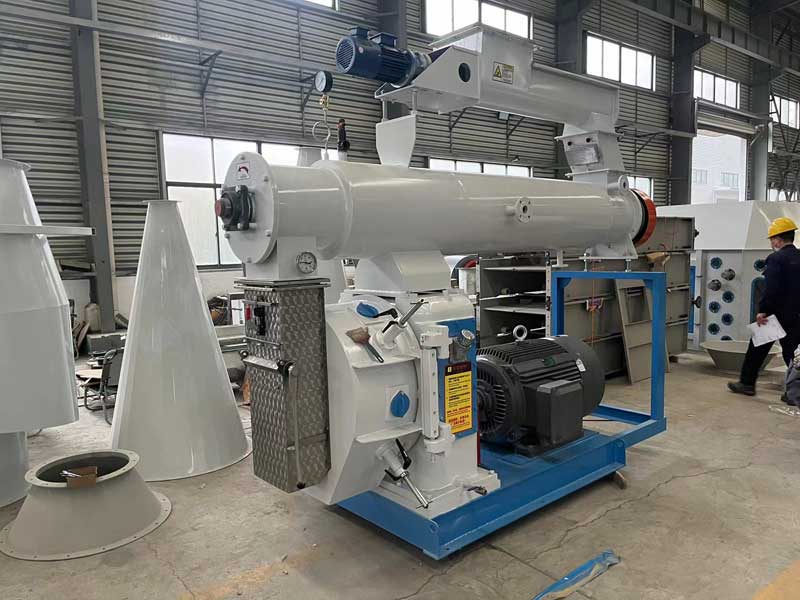
(Image: 3300-dollar 250 ring-die pellet mill—it comes with an automatic feeder and cooling system, cranking out up to 1 ton per hour, making it the go-to for medium-sized farms.)
The technology steps up here with a high-efficiency ring-die extrusion design. Unlike the flat die on cheaper models, this one uses a cylindrical ring die with hundreds of small holes inside. 3-4 pressure rollers spin fast inside the ring die, squeezing feed outwards to form pellets. It also has an automatic feeding auger (no more manual feeding!) and a conditioner that uses steam to soften the feed—this makes pellets form better and easier for chickens to digest. The motor is 7.5-15KW, so you’ll get a steady 0.5-1.5 tons per hour. Not only does it produce more, but the pellets are also more evenly hard, so chickens waste less feed. The feed conversion rate is 5%-8% higher than flat-die machines.
A 2000-dollar 250 ring-die model with 1 ton per hour output is perfect for 3,000 laying hens’ daily feed needs. One farmer did the math: before, he needed two people taking turns to make feed with a 200-dollar machine. Now, one person can finish it in an hour—saving 900 dollar a month in labor. Plus, the die-pressing process boosts feed conversion by 8%, so his 3,000 chickens eat 200kg less feed a month—another 200 dollar saved. He paid off the machine in less than 5 months.
Here’s the key: the 2000-dollar price tag is a trade-off for labor costs and feed waste. It’s not just a machine—it’s a small feed processing unit that turns you from a manual worker into a manager.
20,000+ Dollar Range: A Capacity Gamble for Farming Entrepreneurs
Equipment in this range (either standalone machines or full production lines) is for large-scale farms (2000+ chickens) or professional feed factories. Buyers here aren’t chasing savings—they want standardization, high output, and brand premium.

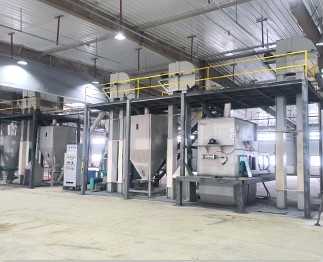
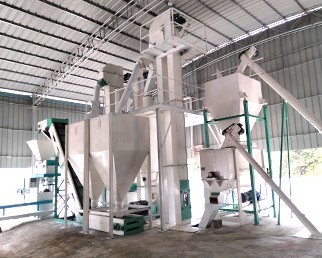
(Image: 2.87 million-dollar fully automatic production line—it includes silos, mixers, pellet mills, coolers, and is controlled by an IoT system, producing over 5 tons per hour.)
- These production lines are full automated with multiple coordinated processes. The whole workflow covers:
- Raw material crushing (grinding corn and other grains to 80-100 mesh for better digestibility)
- Precision batching (automatic mixing according to formulas with electronic scales, error within 0.5%)
- High-temperature conditioning (105-110℃ steam treatment to kill harmful bacteria and soften feed)
- Ring-die pelleting (using heavy-duty ring dies 100-150mm thick—three times more durable than regular ones)
- Cooling and drying (cooling pellets from 80-90℃ to room temperature to prevent mold)
- Grading and screening (removing broken pellets for consistency)
- Some high-end lines even have IoT modules—you can monitor output and die wear remotely, and get fault alerts. The whole system easily hits over 5 tons per hour, and only needs 1-2 people to supervise each hour.
Example: A feed factory owner spent 400 thousand dollars on a fully automatic line with 5 tons per hour output. His logic?
Standardized pellets mean every batch of chickens grows at the same rate and has uniform weight—this is his ticket to partnering with big supermarkets. The high output not only meets his own farm’s needs but also lets him process feed for nearby small farmers, earning 30 dollar per ton in processing fees—an extra 140 thousand dollars a year.
For farming entrepreneurs, the 20,000-dollar+ price is more than a capacity gamble—it’s a brand investment. Stable feed quality builds your farming brand, and high output lowers unit costs. In the end, you get a positive cycle: the bigger your scale, the higher your profits.
Three Questions to Ask Before Picking a Price
What’s my main cost? — Is it labor (go for 2000-dollar+ automated equipment) or initial investment (stick with a 200-dollar transitional model)?
Where do I make my money? — Selling live chickens one by one (great for 200-dollar ecological feed equipment) or large-scale slaughter (better for 20,000-dollar+ production lines)?
Will I expand in 3 years? — If yes, pick the next price tier up from your current scale to avoid buying new equipment later.
The price of a chicken feed machine isn’t just what you pay for the machine. It’s an efficiency deposit for your farming model. A 200-dollar machine bets on side income (small-batch processing with a simple flat-die design). A 2000-dollar machine bets on main job efficiency (higher output with ring-die and automatic feeding). A 20,000-dollar+ machine bets on scale benefits (standardization and high output with fully automated lines).
Picking the right price isn’t about choosing the cheapest or most expensive option. It’s about choosing the one that makes your farming setup profitable. As an experienced farmer put it: “A good pellet mill price means once you buy it, you’ll never have to worry about feed again—you can focus solely on making money from your chickens.”

